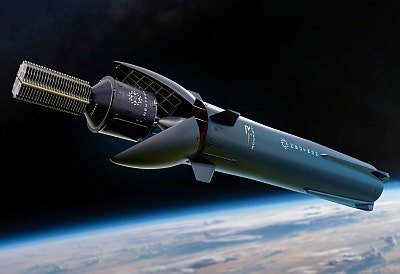The beat goes on: Since yesterday there were three launches globally, two by China and one by SpaceX, with a fourth launch scheduled by Blue Origin only a few hours hence. UPDATE: Blue Origin launch scrubbed due to weather].
First China’s solid-fueled Long March 11 rocket placed three classified military test satellites into orbit, lifting off from an ocean platform off China’s northeastern coast.
Next, China’s solid-fueled Kinetica-1 (Lijian-1) rocket placed two “technical satellites” into orbit, lifting off from the “commercial” launchpad at the Jiuquan spaceport in the country’s northwest. As is normal, China’s press provided no information about the satellites, nor where Kinetica-1’s lower stages crashed inside China. The rocket itself is supposedly commercial, but it is built by a government agency, the Chinese Academy of Sciences.
Finally, in the early morning hours today SpaceX placed 29 more Starlink satellites into orbit, its Falcon 9 rocket lifting off from the Kennedy Space Center in Florida.
The first stage (B1069) completed its 28th flight, landing on a drone ship in the Atlantic. With this launch this booster tied the space shuttle Columbia for the number of reuses by a launch vehicle. As the rankings for the most reused launch vehicles below show, SpaceX now has four boosters close to becoming the most reused rockets ever.
39 Discovery space shuttle
33 Atlantis space shuttle
31 Falcon 9 booster B1067
29 Falcon 9 booster B1071
29 Falcon 9 booster B1063
28 Falcon 9 booster B1069
28 Columbia space shuttle
Sources here and here.
The leaders in the 2025 launch race:
146 SpaceX (a new record)
69 China (a new record)
14 Rocket Lab
13 Russia
SpaceX now leads the rest of the world in successful launches, 146 to 114.
Blue Origin hopes to launch two NASA smallsat Mars orbiters later today from Cape Canaveral, using its New Glenn rocket. That launch is scheduled for 2:35 pm (Eastern). The company will once again attempt to land the first stage on a platform in the Atlantic. I have embedded the live stream below.
UPDATE: Launch scrubbed due to weather. The negotiations with the FAA (see below) now take on greater importance.
This will be the second launch of New Glenn, eleven months after its maiden flight in January. As has been the company’s culture for the past decade, it has moved very slowly from that first launch to this second. This pace however must accelerate soon, as Blue Origin has a 27-launch contract with Amazon to launch part of its Kuiper satellites. Amazon only has 154 satellites in orbit, and needs to get about 1,600 in place by July 2016 to meet the requirements of its FCC license. It also has launch contracts with ULA (46 launches, three of which have been completed) and ArianeGroup’s Ariane-6 (18 launches), but neither can on their own launch enough to do the job.
One last note: For this launch, Blue Origin is trying to arrange an exemption from the FAA’s curfew on day launches that begins tomorrow, in case some issue causes a scrub today. No word as yet on whether the FAA will agree.
» Read more







